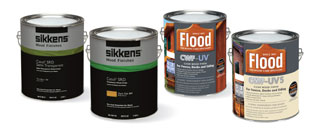The increase in automobile sales over the last couple of months has driven tyre manufacturers to the natural rubber market. But, lately, the sudden spurt in synthetic rubber prices have forced stockists and tyre manufacturers to enter the market. Renewed demand and increase in prices has brought smiles on faces of million-plus natural rubber growers.
The price of the benchmark grade RSS-4 today quoted at Rs 78.50 a kg, higher by Rs 4 compared to the price prevailing a week ago. The rise in prices in the global natural rubber (NR) mart, especially in Tokyo, has endorsed the steep rise in the local markets. As tyre makers became active in the market, rubber quoted at Rs 78.50 today.
For the last few weeks both stockists and manufacturers, especially tyre manufacturing companies have been staying away from the market, projecting that the the bear phase would continue. According to leading NR dealers, most stakeholders expected a steady or lower prices around Rs 72-73, but the sudden rise hit their stock position badly. A major chunk of stockists are now forced to procure rubber to keep the supply chain in tact.
The tyre industry foresee some demand thanks to the growth in sale of passenger vehicles, especially in cars. In the heavy vehicle segment, the sale of bus tyre improved. Confirming the trend, sources in Automotive Tyre Manufacturers Association (ATMA) however said “truck tyre sales are still lagging behind”. There is an increase in sale of tyres in OE segment which had been affected very badly till January of this year. There was not much fall in the replacement segment and a positive change in the sale of OE segment has made manufacturers to procure more rubber to enhance inventory. However, tyre manufacturers are skeptical that any improvement in demand will continue.
Meanwhile, farmers were reluctant to release their produce during January and February when the price dropped below Rs 70 a kg. This, coupled with the lower production in January, February and March, made the supply of NR to terminal markets very tight. Production in January ‘09 had dropped 9 per cent from 103,515 tonne to 94,000 tonne. February production also dropped to 54,520 tonne from 78,095 tonne during the same month of 2008.
In December ‘08 too production was lower by 15,530 tonnes at 96,200 tonnes. During March, the production was expected to confine around 50,000 tonnes. So the overall production during December 08 to March 09 might be lower by 5-6 per cent. In spite of fall in production, there was no supply crunch felt as demand was low. Stock in February, ‘09 was 224,600 tonne against 198,000 tonne in February, ’08.
Source: business-standard.com





